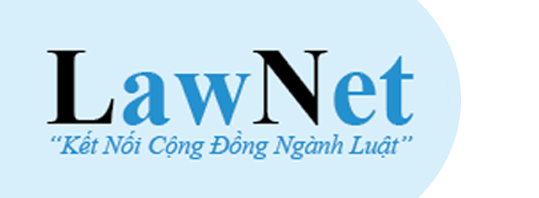Is it Mandatory to Purchase Fire and Explosion Insurance?
Similar to other types of insurance, fire and explosion insurance is a form of insurance for asset risks at some establishments that are prone to fire and explosion hazards. Assets that are required to participate in fire and explosion insurance include: (1) Houses, architectural works, and accompanied equipment; (2) machinery equipment; (3) various types of goods, materials, and other assets whose values can be monetarily quantified.
Decree 130/2006/ND-CP stipulates that agencies, organizations, and individuals subject to mandatory fire and explosion insurance must purchase insurance. The State encourages other agencies, organizations, and individuals not subject to mandatory fire and explosion insurance to purchase insurance on a voluntary basis in accordance with relevant legal regulations. This is because the risk of fire and explosion is unforeseeable, and thus, having insurance for prevention is necessary.

According to Joint Circular 214/2013/TTLT-BTC-BCA and Decree 46/2012/ND-CP, the following facilities and constructions are mandated to purchase fire and explosion insurance:
- Facilities producing explosive materials, facilities extracting, processing petroleum and petroleum products, gas; facilities producing, processing other flammable goods with a volume of 5,000 m3 or more.- Warehouses of explosive materials, petroleum and petroleum products, liquefied gas; ports for importing/exporting explosive materials, petroleum and petroleum products, liquefied gas.- Gasoline and liquefied gas trading stores.- Power plants; substations of 110 KV or more.- Solid, semi-solid markets under the direct management of district People's Committees or higher authorities; other solid, semi-solid markets, shopping centers, supermarkets, and department stores with total stall area of 300 m2 or more or volume of 1,000 m3 or more.- Collective residences, apartment buildings, hotels, guest houses, inns with 5 floors or more or volume of 5,000 m3 or more.- Provincial hospitals, ministries, and central authorities’ hospitals; other healthcare facilities with 50 beds or more.- Theaters, cinemas, auditoriums, cultural houses, sports halls designed with 200 seats or more, discotheques, indoor clubs, indoor entertainment and public service facilities with an area of 200 m2 or more; stadiums with 5,000 seats or more.- Railway stations, airports; sea ports, river ports, provincial bus stations; parking lots with 200 cars or more; level 1, 2, and 3 railway passenger stations; level 1 and 2 railway goods stations.- Archives, libraries, museums, historical sites, fair, and exhibition houses under the direct management of ministries, ministerial-level agencies, provinces, or centrally-affiliated cities or provinces.- Provincial or higher-level broadcasting and television stations, postal and telecommunications establishments.- Regional and national command, control, operation, and management centers in all fields.- Warehouses of flammable goods, materials, or non-flammable materials stored in flammable packaging with a volume of 5,000 m3 or more; flammable goods, material yards with an area of 500 m2 or more.- Headquarters, office buildings, research facilities with 6 floors or more or volume of 25,000 m3 or more.- Coal mines and other flammable mineral extraction tunnels; underground traffic works 400 meters or more in length; works in caves, tunnels used for producing, storing, or using flammable, explosive substances with a volume of 1,000 m3 or more.- Facilities and structures with major or main sections that, if a fire or explosion occurs, would severely affect the entire facility or structure or have total area or volume of the section making up 25% of the area or volume of the entire facility or structure, often with hazardous flammable, explosive substances:- Flammable gas forming explosive mixtures occupying 5% of the room's air volume or 70 kg of flammable gas or more;- Explosive dust or fibers with a lower explosive limit equal to or less than 65 g/m3 forming explosive mixtures occupying 5% of the room's air volume; solid flammable materials at 100 kg per square meter;- Substances that can combust, explode, or produce combustible, explosive substances when reacted together with a total mass of 1,000 kg or more;- Substances that can combust, explode, or produce combustible, explosive substances when reacting with water or air oxygen with a mass of 500 kg or more.- Metro facilities; railway tunnels over 2,000 meters; road tunnels 600 meters or more in length; coal mines and other flammable mineral extraction tunnels; underground works with a volume of 1,000 m3 or more used for producing, storing, or using flammable, explosive substances.
Organizations, agencies, and individuals required to purchase the mandatory fire and explosion insurance above must sign a fire and explosion insurance contract with an insurer and be issued an insurance certificate.
- Number of deputy directors of departments in Vietnam in accordance with Decree 45/2025/ND-CP
- Cases ineligible for pardon in Vietnam in 2025
- Decree 50/2025 amending Decree 151/2017 on the management of public assets in Vietnam
- Circular 07/2025 amending Circular 02/2022 on the Law on Environmental Protection in Vietnam
- Adjustment to the organizational structure of the Ministry of Health of Vietnam: Certain agencies are no longer listed in the organizational structure
- Vietnam aims to welcome 22-23 million international tourists in Vietnam in 2025
-

- Notable new policies of Vietnam effective as of ...
- 16:26, 11/04/2025
-
.Medium.png)
- Notable documents of Vietnam in the previous week ...
- 16:21, 11/04/2025
-
.Medium.png)
- Notable documents of Vietnam in the previous week ...
- 16:11, 02/04/2025
-
.Medium.png)
- Notable new policies of Vietnam to be effective ...
- 16:04, 02/04/2025
-
.Medium.png)
- Notable new policies of Vietnam effective from ...
- 14:51, 21/03/2025
 Article table of contents
Article table of contents
